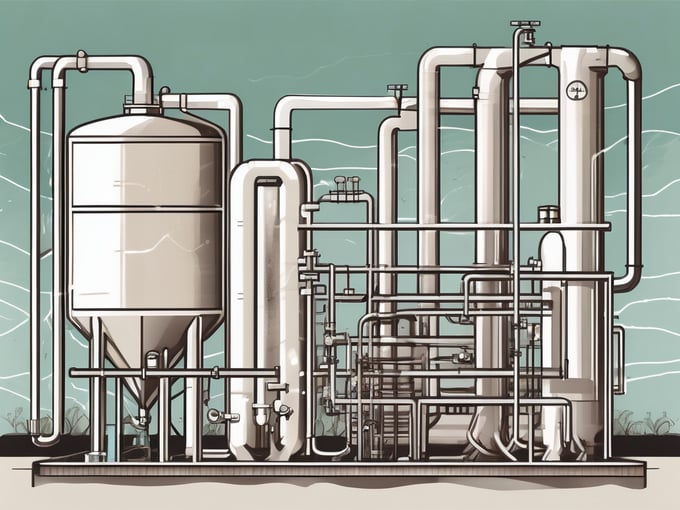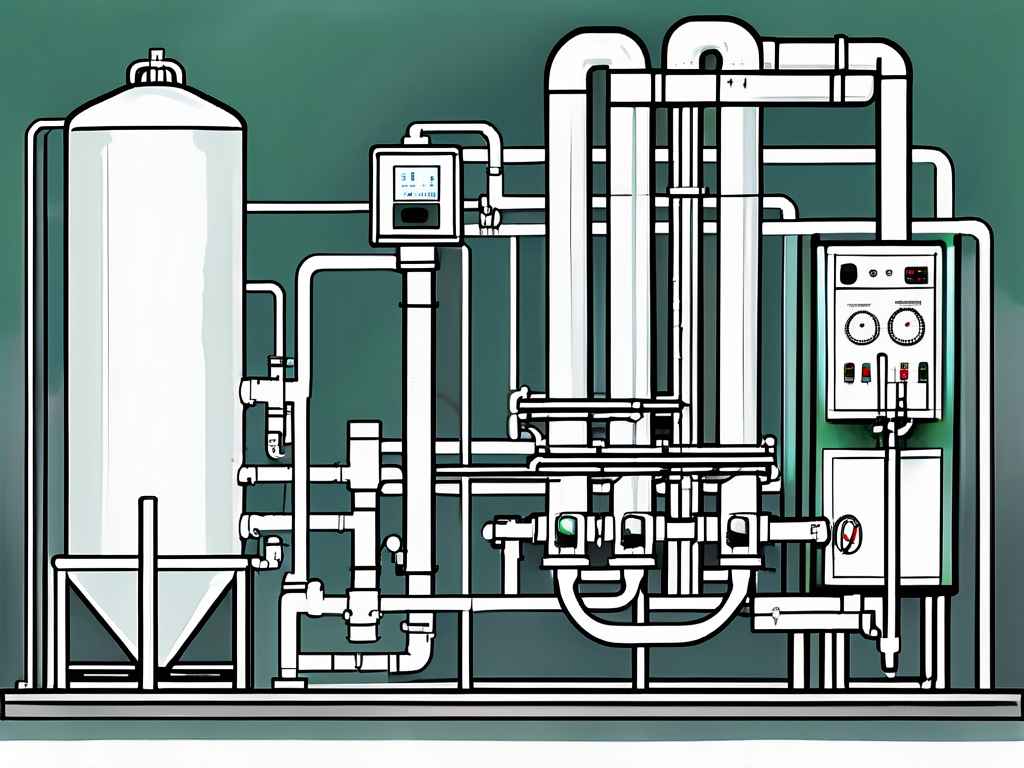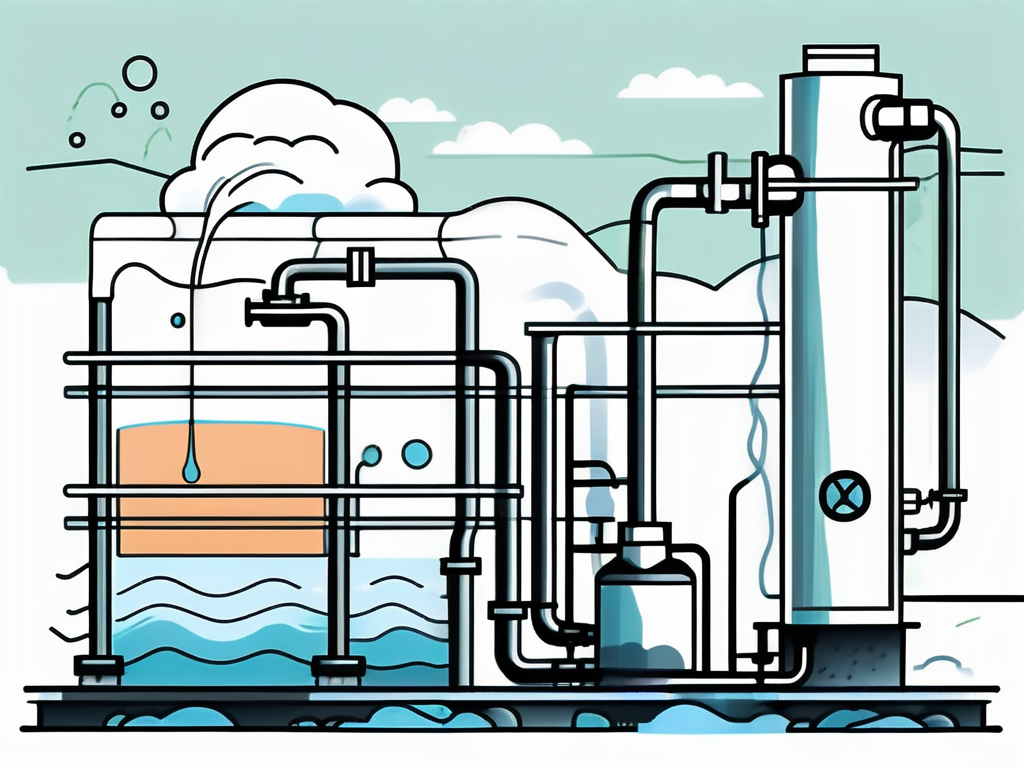
BOD5: Wastewater Treatment Explained
Biochemical Oxygen Demand (BOD5) is a critical parameter in wastewater treatment, providing a measure of the organic pollutant concentration in a water sample. This measurement is crucial in assessing the effectiveness of wastewater treatment processes and ensuring that the treated water is safe for discharge into the environment.
Understanding BOD5 is essential for anyone involved in wastewater treatment, from engineers and scientists to regulators and environmentalists. This glossary entry will delve into the intricacies of BOD5, explaining its importance, how it's measured, and its role in various wastewater treatment processes.
Understanding BOD5
BOD5 is the amount of oxygen required by aerobic microorganisms to decompose the organic matter in a water sample over a five-day period at 20°C. It serves as an indirect measure of the biodegradable organic material present in the water. The higher the BOD5, the greater the amount of organic matter, indicating a higher level of pollution.
The '5' in BOD5 refers to the five-day incubation period used in the test. This period was chosen because it approximates the travel time of water in a river, from the point of discharge to the point where it's diluted to a non-critical concentration.
Importance of BOD5
BOD5 is a crucial parameter in wastewater treatment because it indicates the amount of organic pollution in the water. High levels of BOD5 can deplete dissolved oxygen in receiving waters, harming aquatic life. Therefore, reducing BOD5 is a primary goal of wastewater treatment.
Regulatory agencies use BOD5 to set effluent standards and monitor compliance. It's also used to design and size wastewater treatment plants, as the BOD5 load determines the amount of oxygen needed in the biological treatment process.
Limitations of BOD5
While BOD5 is a useful measure of organic pollution, it has limitations. It doesn't account for all types of organic matter, only those that are biodegradable within five days. Some pollutants may take longer to degrade, while others may not be biodegradable at all.
Furthermore, BOD5 is influenced by factors such as temperature and microbial population, which can vary. It's also a time-consuming test, taking five days to complete, which can delay decision-making in wastewater treatment.
Measuring BOD5
The standard method for measuring BOD5 is a five-day test at 20°C, as described in standard methods for the examination of water and wastewater. The test involves diluting a water sample with a nutrient-rich buffer solution, then incubating it in the dark for five days. The decrease in dissolved oxygen concentration over this period is measured and used to calculate BOD5.
The BOD5 test requires careful handling to avoid errors. For example, the sample must be well-mixed and free of chlorine, which can inhibit microbial activity. The dilution water must also be saturated with oxygen and contain a sufficient amount of nutrients for microbial growth.
Alternative Methods
Due to the limitations of the BOD5 test, alternative methods have been developed. These include the Chemical Oxygen Demand (COD) test, which measures the amount of oxygen required to chemically oxidize all organic matter, not just the biodegradable portion. The COD test is faster than the BOD5 test, taking only a few hours, but it can overestimate the amount of organic pollution because it measures all organic matter, not just the biodegradable portion.
Another alternative is the Total Organic Carbon (TOC) test, which measures the total amount of carbon in organic compounds in water. The TOC test is also faster than the BOD5 test, but it doesn't provide information on the biodegradability of the organic matter.
BOD5 in Wastewater Treatment
BOD5 plays a central role in the biological treatment of wastewater, which involves using microorganisms to decompose organic matter. The BOD5 load determines the amount of oxygen needed in the aeration tank, where air is bubbled through the wastewater to support the growth of aerobic bacteria.

The goal of biological treatment is to reduce BOD5 to a level that won't deplete dissolved oxygen in receiving waters. This is typically achieved through a combination of aerobic and anaerobic processes, which break down organic matter into simpler substances that can be further treated or safely discharged.
Aerobic Treatment
In aerobic treatment, bacteria consume organic matter in the presence of oxygen, converting it into carbon dioxide, water, and new bacterial cells. The amount of oxygen required for this process is directly related to the BOD5 of the wastewater. Therefore, measuring BOD5 is crucial for controlling the aeration process and ensuring efficient treatment.
The by-products of aerobic treatment, mainly new bacterial cells, form a sludge that must be separated from the treated water. This sludge is often further treated in an anaerobic process, which reduces its volume and produces biogas that can be used for energy.
Anaerobic Treatment
Anaerobic treatment involves the breakdown of organic matter by bacteria in the absence of oxygen. This process produces methane and carbon dioxide, collectively known as biogas, which can be captured and used for energy. Anaerobic treatment is often used for the treatment of sludge from aerobic processes, but it can also be used for the treatment of high-strength industrial wastewaters.
While anaerobic treatment doesn't consume oxygen, it does reduce BOD5 because the organic matter is converted into biogas. However, the process is slower than aerobic treatment and can produce odors if not properly managed.
Conclusion
BOD5 is a critical parameter in wastewater treatment, reflecting the amount of biodegradable organic matter in the water. Understanding BOD5 is essential for designing and operating wastewater treatment plants, as well as for regulatory compliance.

While the BOD5 test has limitations, it remains a standard method for assessing organic pollution in wastewater. Alternative methods, such as COD and TOC, provide additional information but don't replace the need for BOD5 measurement. As our understanding of wastewater treatment evolves, so too will our methods for measuring and reducing BOD5.



